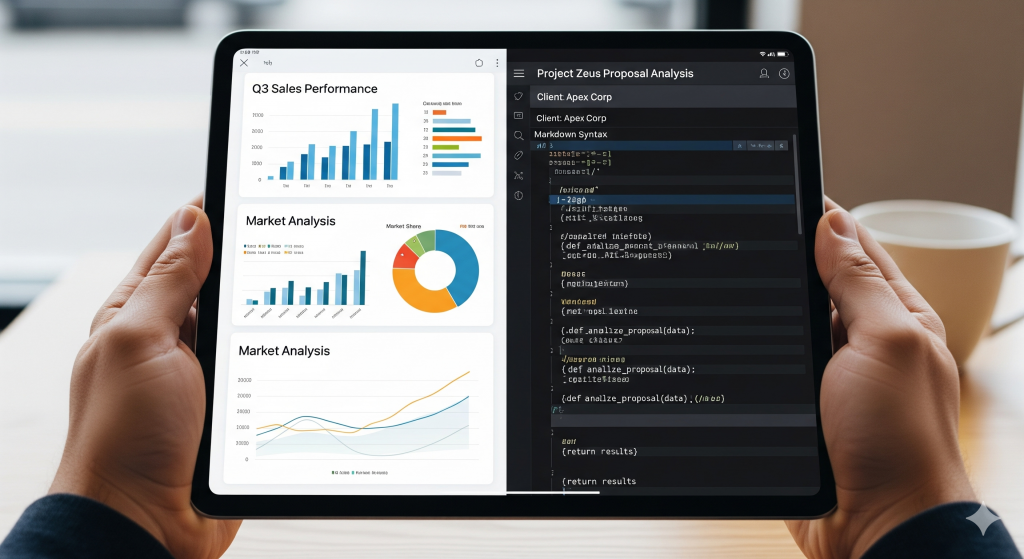
Why Pretty Decks Don’t Win Alone Anymore
A client asked us to review a 50+ page, well designed Powerpoint proposal for them. We didn’t open the deck. We fed it into Perceptor, and scored the substance: claims, evidence, fit to requirements, risk, and gaps. No layouts. No hero images. No colour palette. Just words — and whether they stood up.
AI has moved proposal evaluation from surface to substance. Perceptor strips documents to meaning, nuggets of knowledge, normalises them across vendors, and compares like for like. It flags vague promises, checks consistency, and highlights where proof is thin. The conversation changes from “Isn’t this slick?” to “Is this true, relevant, and aligned?”
Does design still matter? Absolutely — but later. In the screening phase, substance decides who makes the shortlist. Design then earns trust in the final mile: demos, stakeholder buy-in, onboarding. Designers aren’t out of a job; they’re in a different act.
New metrics worth tracking:
• Time-to-Substance (minutes to a defensible first view)
• Claim-to-Proof Ratio
• Fit Score vs Flair
• Known-Risk Visibility
Why this matters now: budgets are tight, stakes are high, and decision cycles are too slow/costly.
Pretty decks aren’t over. They’re just not Act I anymore. Lead with truth and structure; let design carry the win across the line.
